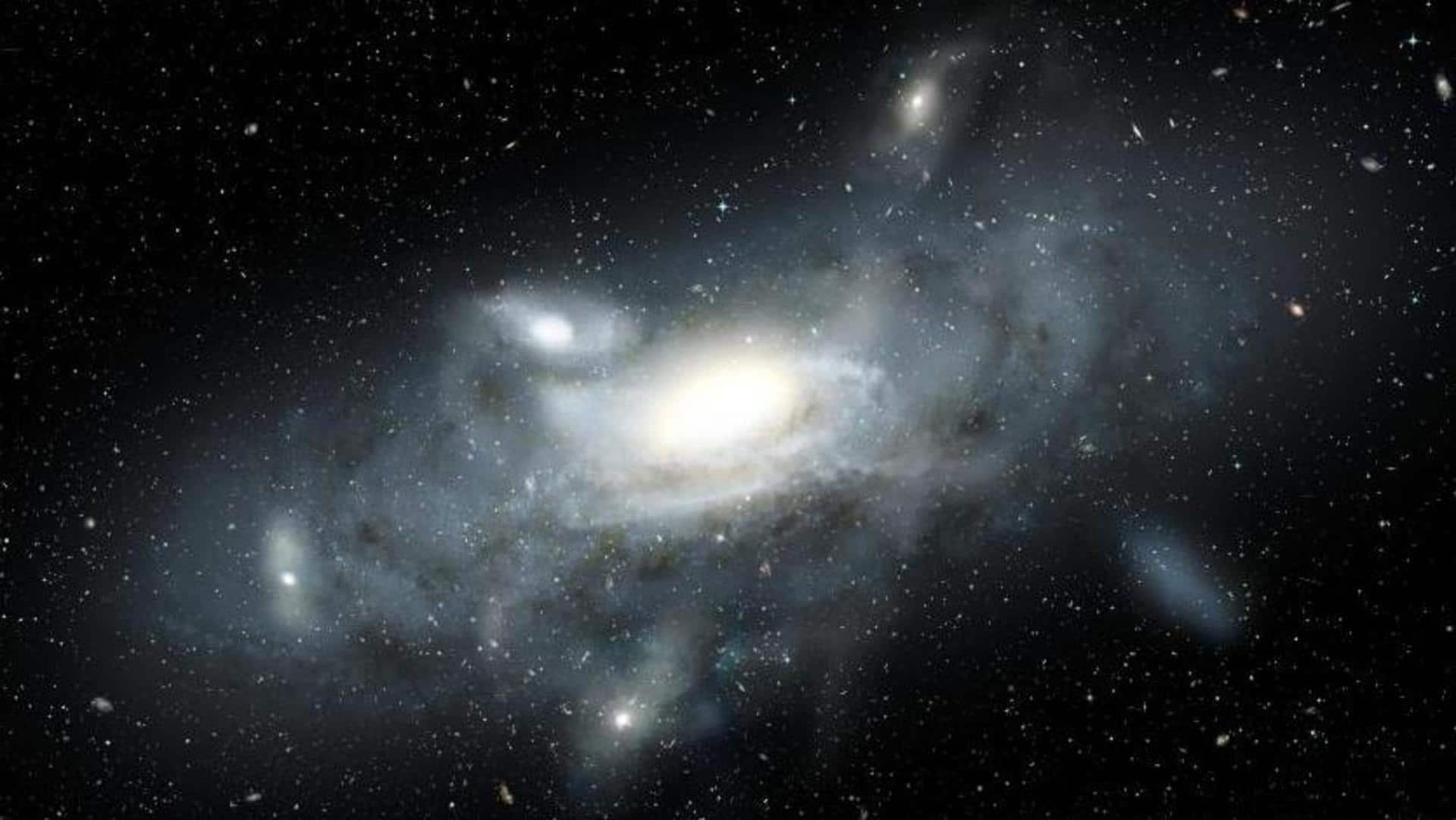
Has NASA's Webb found the mirror galaxy of Milky Way
What's the story
A distant galaxy has been found that resembles the early stages of the evolution of the Milky Way. The galaxy, called "The Sparkler," is enveloped by ancient star clusters and appears to be devouring the surrounding smaller companion galaxies as it grows. The discovery of the Sparkler galaxy was made using some of the first data from the James Webb Space Telescope (JWST).
Context
Why does this story matter?
What's fascinating about the discovery of the Sparkler galaxy is that it mirrors what our home galaxy, the Milky Way, must have looked like during its infancy. More so, this finding has allowed astronomers to look back at a time when the universe was about "1/3rd of its present age," thanks to the incredible observational powers of NASA's Webb telescope.
Details
The Sparkler lies in the southern constellation Volans
Sparkler, which lies in the southern constellation Volans, provides a unique insight into the formation history of the Milky Way. The galaxy has been given the name, Sparkler, as it is surrounded by two dozen luminescent globular clusters. Globular clusters are groups of tightly bound stars and each cluster contains about a million stars. The Milky Way is home to roughly 200 globular clusters.
Discovery
Researchers examined the metallicity distribution of the Sparkler galaxy system
The team estimated the age of Sparkler and its surrounding star clusters by looking at their metallicity distribution i.e. the abundance of elements heavier than hydrogen and helium. Upon examination, astronomers discovered that the star clusters looked like the younger versions of those around the Milky Way. Several of these galaxies are metal-rich, similar to globular clusters at the central bulge of our galaxy.
Study
Sparkler is currently 3% the mass of the Milky Way
Some other star clusters had intermediate ages and were metal-poor. These clusters are associated with the satellite galaxy that is being devoured by the Sparkler galaxy. Currently, the Sparkler galaxy is 3% the mass of the Milky Way but scientists expect it to grow over cosmic timescales and eventually match the mass of the Milky Way as we know it today.
Information
The galaxy is seen as it was 9 billion-years ago
Interestingly, the Sparkler galaxy is seen as it was around nine billion years ago, which is about four billion years after the Big Bang. The observations, stemming from the Webb telescope, were made possible due to the brightening effect of a gravitational lens.
Official words
The team will continue to study the Sparkler galaxy
"We appear to be witnessing, first hand, the assembly of this galaxy [Sparkler] as it builds up its mass-in the form of a dwarf galaxy and several globular clusters," said Duncan Forbes, from Swinburne University in Australia. The team will continue to investigate Sparkler to learn more about this distant, early galaxy and about the evolution of our Milky Way.
Information
"We are excited by this unique opportunity"
"We are excited by this unique opportunity to study both the formation of globular clusters, and an infant Milky Way, at a time when the Universe was only 1/3 of its present age," added Forbes.